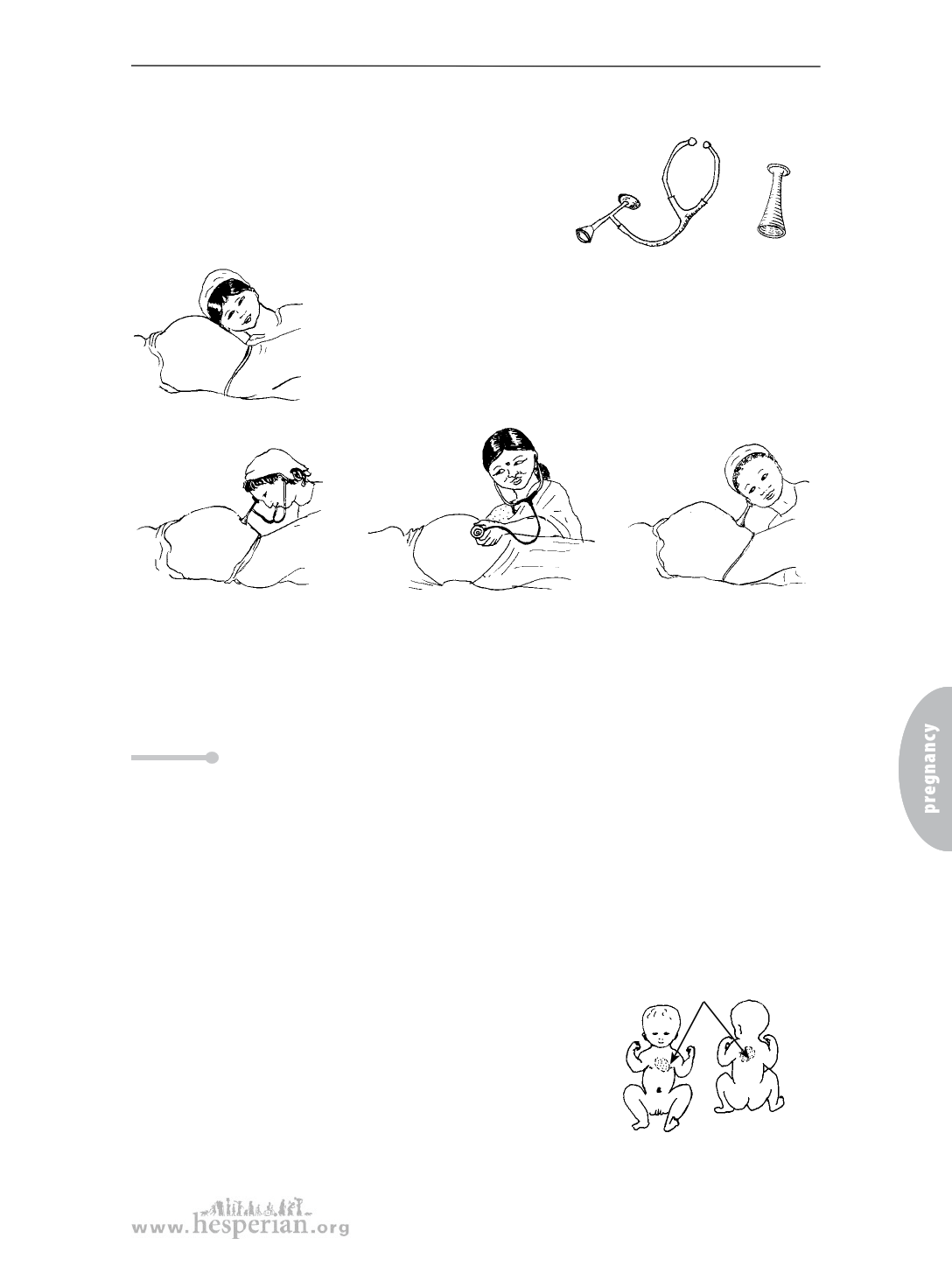
Check the baby
Listening to the baby’s heartbeat
The baby’s heartbeat gives information about the baby’s
position inside the mother and about the health of the baby.
Listen to the heartbeat at each visit starting at 5 months.
By the last 2 months, you can often hear the
baby’s heartbeat in a quiet room by putting your
ear on the mother’s belly.
The heartbeat will be easier to
fetoscope
1-ear
fetoscope
hear if you have a fetoscope or a stethoscope. You can
make a simple fetoscope from wood, clay, or a hollow
tube of bamboo (see page 445). Or you can buy a
fetoscope.
2-ear fetoscope
stethoscope
1-ear fetoscope
The baby’s heartbeat is quiet and quick. It may sound like a watch ticking under
a pillow, only faster. The baby’s heartbeat is about twice as fast as a healthy
adult heartbeat — usually 120 to 160 beats a minute.
Note: If you hear a “swishy” sound (shee-oo shee-oo shee-oo), you are
probably hearing the baby’s pulse in the cord. Cord sounds tell you
how fast the baby’s heart is beating, but they do not help you find the
baby’s position.
If the heartbeat sounds slow, you are probably hearing the mother’s
pulse instead of the baby. Try listening to a different place on her belly.
Find the baby’s heartbeat
Think about which way the baby seems to be lying.
Then start listening for the heartbeat near the spot
where you think the baby’s heart should be. You may
need to listen in many places before you find the spot
where the heartbeat is the most loud and clear.
This is where the
heartbeat is loudest:
139
A Book for Midwives (2010)